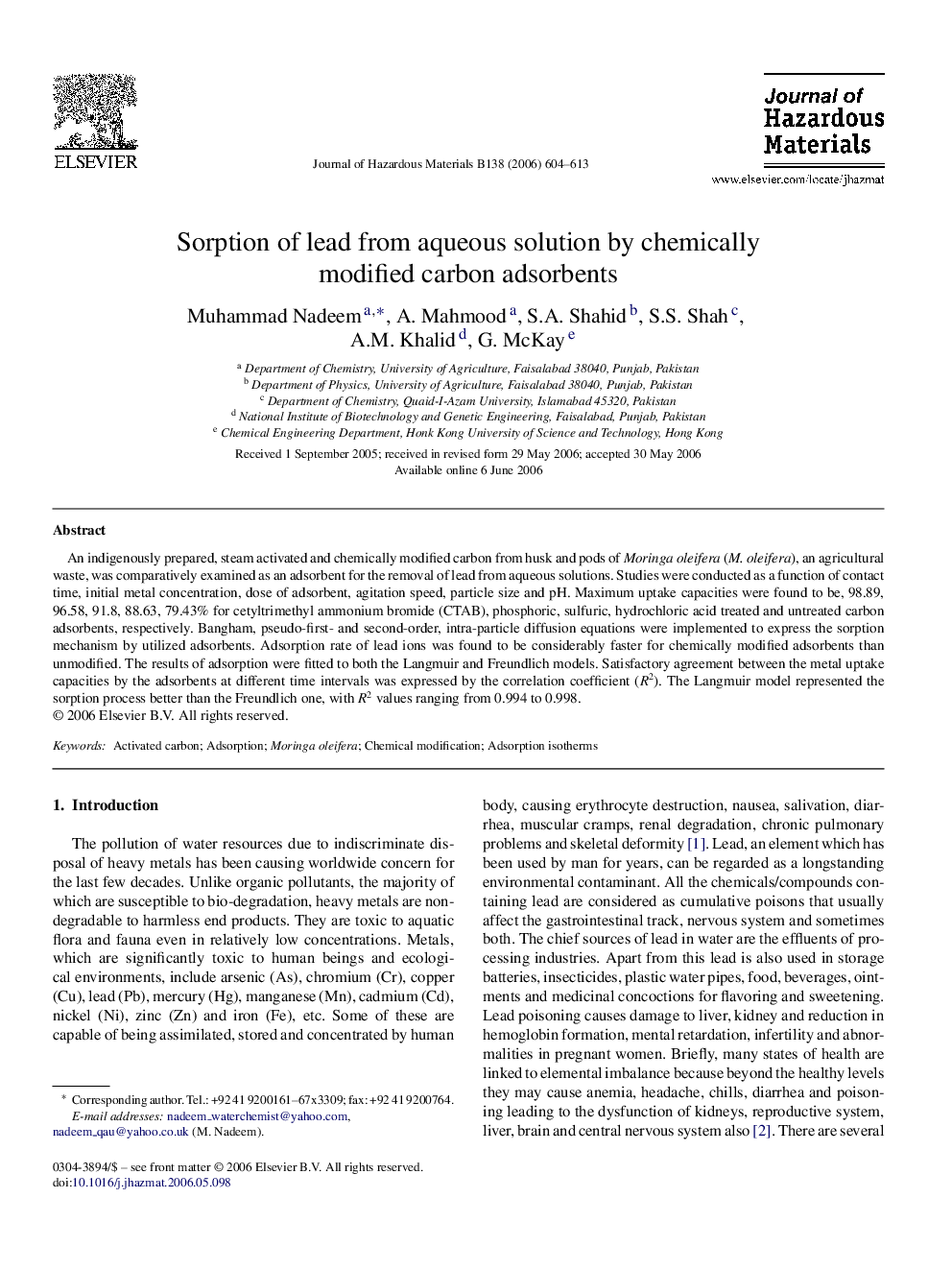| Article ID | Journal | Published Year | Pages | File Type |
|---|---|---|---|---|
| 585073 | Journal of Hazardous Materials | 2006 | 10 Pages |
Abstract
An indigenously prepared, steam activated and chemically modified carbon from husk and pods of Moringa oleifera (M. oleifera), an agricultural waste, was comparatively examined as an adsorbent for the removal of lead from aqueous solutions. Studies were conducted as a function of contact time, initial metal concentration, dose of adsorbent, agitation speed, particle size and pH. Maximum uptake capacities were found to be, 98.89, 96.58, 91.8, 88.63, 79.43% for cetyltrimethyl ammonium bromide (CTAB), phosphoric, sulfuric, hydrochloric acid treated and untreated carbon adsorbents, respectively. Bangham, pseudo-first- and second-order, intra-particle diffusion equations were implemented to express the sorption mechanism by utilized adsorbents. Adsorption rate of lead ions was found to be considerably faster for chemically modified adsorbents than unmodified. The results of adsorption were fitted to both the Langmuir and Freundlich models. Satisfactory agreement between the metal uptake capacities by the adsorbents at different time intervals was expressed by the correlation coefficient (R2). The Langmuir model represented the sorption process better than the Freundlich one, with R2 values ranging from 0.994 to 0.998.
Related Topics
Physical Sciences and Engineering
Chemical Engineering
Chemical Health and Safety
Authors
Muhammad Nadeem, A. Mahmood, S.A. Shahid, S.S. Shah, A.M. Khalid, G. McKay,
